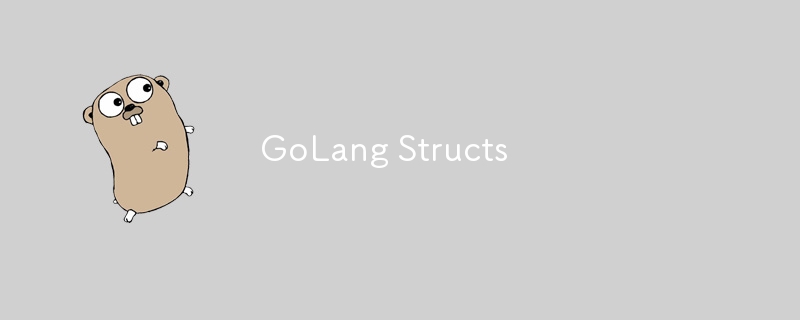
在 Golang 中,結構體是簡單的資料容器。
下面顯示了 Ruby 和 GoLang 中的一個簡單的 Book 類別等效項。
class Book
attr_reader(:title, :author)
def initalize(title, author)
@title = title
@author = authoer
end
end
# usage
book = Book.new('Title', 'Jon Snow')
// Equivalent to `class Book` in ruby
type Book struct {
Title string,
Author string
}
複合文字是一步建立初始化複合型別的語法。我們可以實例化以下類型:
這裡我們將一個新的 Book 實例指派給變數 book
// Composite Literal
book := Book{
Title: "Title",
Author: "Author"
}
較長的形式是使用 new 關鍵字。這類似於我們在 Ruby 中使用 book = Book.new(..)
實例化一個類別的方式我們將使用 = 符號來分配書籍的屬性(即標題和作者)。
// Using the `new` keyword book := new(Book) book.Title = "Book Title" book.Author = "John Snow"
注意到我們在第一個範例中使用了符號 := 嗎?
它是以下宣告變數並為其賦值的詳細方式的語法糖。
// Without Short Virable Declaration // Example 1 var book Book // Declare variable `book` of type `Book` book.Title = "Book Title" // Assign the value to book variable book.Author = "John Snow" // Example 2 var count int count = 20
當我們需要時,我們也可以使用工廠模式來簡化結構體的初始化:
假設我們希望將書名和作者標記的每個第一個字元大寫。
// Factory Function
func NewBook(title string, author string) Book {
return Book{
Title: titlelise(title), // default logic to "titlelise"
Author: titlelist(author)
}
}
func titlelise(str string) {
caser := cases.Title(lanaguage.English)
return caser.String(str)
}
在 Ruby 中,我們只需在類別中定義一個函數即可。在這裡,我們定義一個名為 to_string() 的函數來列印書名作者。
class Book
attr_reader(:title, :author)
def initalize(title, author)
@title = title
@author = authoer
end
# new function we added
def to_string()
put "#{title} by #{string}"
end
end
在 GoLang 中,我們透過將結構傳遞給函數來「附加」函數。
// Equivalent to `class Book` in ruby
type Book struct {
Title string,
Author string
}
// Attaching the function to the `struct`
func (book Book) ToString() string {
return fmt.Sprintf("%s by %s", book.Title, book.Author)
}
// Usage
book := Book{
Title: "Title",
Author: "Author"
}
book.ToString()
// => Title by Author
解釋:
func (book Book) ToString() string
| Token | Description |
|---|---|
| func | function keyword |
| (book Book) | Attaching the function to the type Book struct - book: variable to access the struct within the function - Book: type of the struct |
| ToString() | name of the function |
| string | return type of the function |
以上是Go 語言結構的詳細內容。更多資訊請關注PHP中文網其他相關文章!




